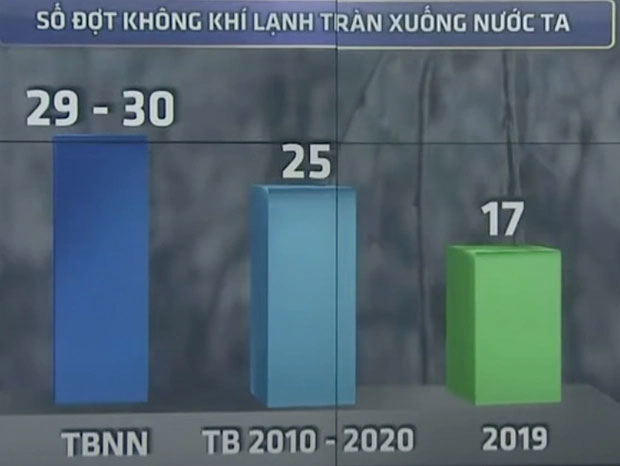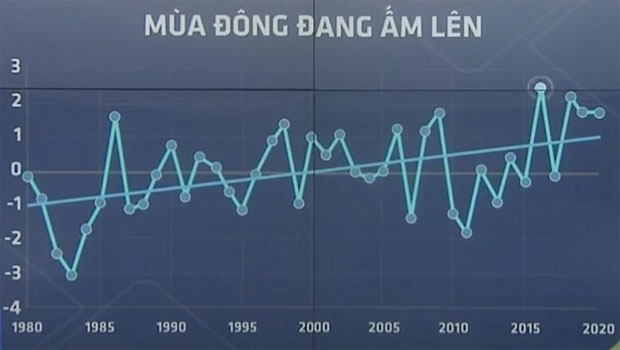Experts warn about natural disasters and extreme weather, providing insights and assessments regarding the hot weather patterns as we approach mid-November and the onset of winter.
Mid-November: Northern Vietnam Still Experiences Heat
Despite the arrival of winter and being in mid-November, residents in Northern Vietnam are still feeling the heat, with many opting for short-sleeved clothing when going outside. Daily high temperatures have been forecasted to hover around 30 degrees Celsius for nearly a month.
Statistics from the National Center for Hydro-Meteorological Forecasting indicate that since early October, although cold air waves have been welcomed, only the cold air outbreak from October 18 to 20 has caused a drop in temperature in the Northern region.
Common low temperatures range from 14-17 degrees Celsius, with mountainous areas experiencing even lower temperatures. In some high mountainous regions, temperatures have dropped below 11 degrees Celsius. Additionally, the Gulf of Tonkin has recorded strong Northeast winds at level 6, gusting to level 7.
As we move into November, the average temperature in Northern Vietnam and North Central Vietnam is 0.5 degrees Celsius higher than the historical average. Around mid to late December, the Northern region is expected to experience its first severe cold spell of the winter season in 2022.
In an interview, Dr. Nguyen Ngoc Huy, an expert in disaster warning and extreme weather, stated that this year, La Niña is in its late phase and is preparing to transition to a neutral phase starting in early 2023. La Niña’s shift to a neutral phase is expected to reduce rainfall and cold temperatures, leading to a warmer and drier period.
“La Niña is still present, but its influence is no longer at high latitudes. The rainfall and cold phenomena are now occurring at lower latitudes near the equator. Areas above latitude 17 are less affected by La Niña during this time, which is why the weather is not very cold,” Dr. Huy explained.

Over the past decade, the number of cold air outbreaks reaching our country has decreased compared to normal data. (Photo: VTV)
Dr. Nguyen Ngoc Huy also emphasized that the average temperature for this winter will be higher than in previous years. Interspersed with warm sunny periods, there will still be some cold spells, but they will not last long.
“This winter, there will be many warm sunny days, while the number of cold days will be fewer than in previous years. There may still be severe cold spells and snow, but when averaged over the cold periods, it will be less than in previous years. The likelihood of such cold spells occurring is also low because during neutral or El Niño phases, the chances of cold outbreaks decrease,” Dr. Huy analyzed.
According to Dr. Nguyen Ngoc Huy, the Global Forecast System (GFS) climate analysis model indicates that the northern provinces of Vietnam will have average temperatures 1 – 1.5 degrees Celsius higher than the average during the 1980 – 2009 period. Meanwhile, the average temperature in the North Central region will be 0.5 – 1 degrees Celsius higher. The southern provinces will remain unchanged compared to previous years.
“We may face an extremely hot summer next year as temperatures are predicted to be higher than the historical average. We need to start planning for energy conservation and efficient use now, as next summer may experience power shortages due to increased demand,” Dr. Huy informed.
Additionally, Dr. Huy noted that hail could occur in the northern provinces at the beginning of the year, while drought may happen in the Mekong Delta.
“If the neutral phase remains stable, there will be no extreme weather, but if the neutral phase transitions to La Niña or El Niño, we will see more extreme weather events,” Dr. Huy added.
Winter is Warming Up
Information from the program Vietnam Today on VTV1 on November 12 indicates that winter is not only arriving late but is also trending warmer due to the impacts of climate change, particularly over the last decade. Among these years, 2016 is noted as the warmest, with winter temperatures exceeding the historical average by 2.5 degrees Celsius.
The years 2018, 2019, and 2020 are also listed among the five warmest winters from 1986 to 2020. The number of days with severe cold, defined as average daily temperatures below 15 degrees Celsius, and the number of days with extreme cold, with average daily temperatures below 13 degrees Celsius, have also significantly decreased.

Winter is gradually warming up. (Photo: VTV).
In Vietnam, statistics over the past 60 years show a significant decline in the number of cold air outbreaks from Siberia. Typically, there are 29-30 cold air outbreaks each year, but this has decreased to 25 outbreaks over the last decade. Notably, since 2019, there have only been 17 cold air outbreaks from Siberia affecting our country.
Mr. Nguyen Van Huong, Head of the Weather Forecasting Department at the National Center for Hydro-Meteorological Forecasting, stated that this winter, the average temperature across Northern and North Central Vietnam is expected to be 0.5-1 degrees Celsius higher than the historical average.
In the coming days, from November 19-20, there will be a cold air outbreak stronger than that of November 13-14, causing strong winds over the Gulf of Tonkin and the northern and central parts of the East Sea.
At the launch of the 2021 Asia Climate Report, Professor Tran Hong Thai, Vietnam’s representative at the World Meteorological Organization (WMO), Vice President of the Regional Association II of Asia (RA II), and Director General of the General Department of Meteorology and Hydrology, reported that climate change has been observed throughout the Asian region. Temperatures in 2021 in the region were 0.86 degrees Celsius higher than the average from 1981 to 2010.
Decreased rainfall and less snow development have affected water supplies for crops and reduced yields. Weather and extreme phenomena due to climate change have caused casualties and damages throughout the region.
According to estimates by the United Nations Economic and Social Commission for Asia and the Pacific (ESCAP), approximately 48.3 million people in Asia were directly affected by natural disasters, especially typhoons and floods. This led to about 4,000 fatalities, with around 80% due to flooding.
Overall, it is estimated that natural disasters caused total economic losses of $35.6 billion, higher than the average over the past two decades, particularly due to damages from drought, floods, and landslides.
“These figures do not lie about the vulnerability of the Asian region to climate change. Our region is truly in danger due to climate change,” Mr. Thai emphasized.

















































